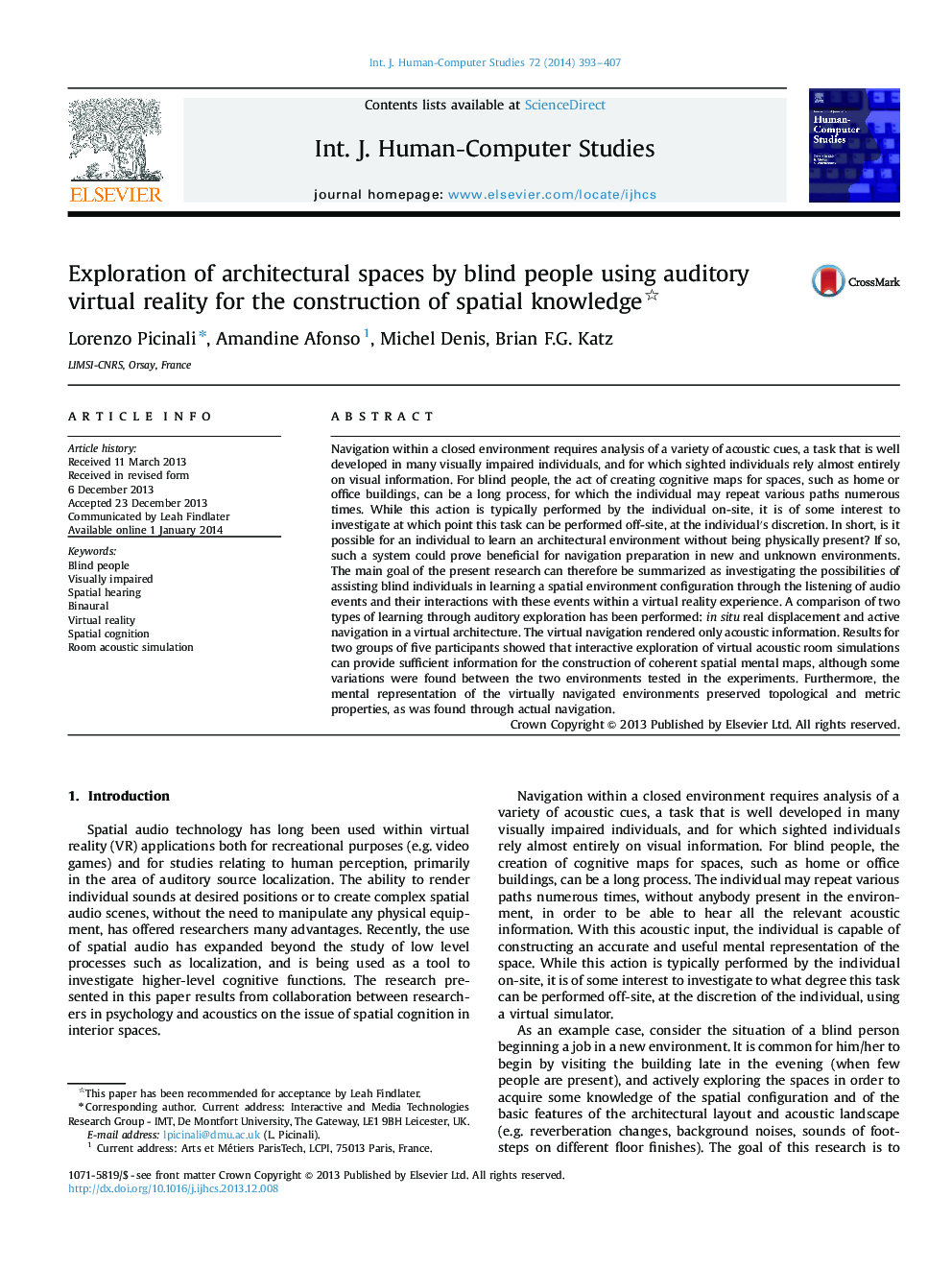| Article ID | Journal | Published Year | Pages | File Type |
|---|---|---|---|---|
| 401873 | International Journal of Human-Computer Studies | 2014 | 15 Pages |
•We assess VR for assisting the blind in learning architectural environments.•We develop an interactive acoustic VR platform for environmental exploration by the blind.•We compare two types of learning through purely auditory exploration.•Navigation in VR acoustic models provided comparable results to real navigation.
Navigation within a closed environment requires analysis of a variety of acoustic cues, a task that is well developed in many visually impaired individuals, and for which sighted individuals rely almost entirely on visual information. For blind people, the act of creating cognitive maps for spaces, such as home or office buildings, can be a long process, for which the individual may repeat various paths numerous times. While this action is typically performed by the individual on-site, it is of some interest to investigate at which point this task can be performed off-site, at the individual's discretion. In short, is it possible for an individual to learn an architectural environment without being physically present? If so, such a system could prove beneficial for navigation preparation in new and unknown environments. The main goal of the present research can therefore be summarized as investigating the possibilities of assisting blind individuals in learning a spatial environment configuration through the listening of audio events and their interactions with these events within a virtual reality experience. A comparison of two types of learning through auditory exploration has been performed: in situ real displacement and active navigation in a virtual architecture. The virtual navigation rendered only acoustic information. Results for two groups of five participants showed that interactive exploration of virtual acoustic room simulations can provide sufficient information for the construction of coherent spatial mental maps, although some variations were found between the two environments tested in the experiments. Furthermore, the mental representation of the virtually navigated environments preserved topological and metric properties, as was found through actual navigation.
